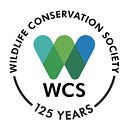WCS 3-Sentence Science
Researchers Use DNA-Barcoding to ID Sharks in World’s Largest Shark Fishery
July 31, 2019
Each year, Wildlife Conservation Society scientists publish more than 300 peer-reviewed studies and papers. “WCS 3-Sentence Science” is a regular tip-sheet — in bite sized helpings — of some of this published work.
Here we present work by the WCS Indonesia marine program on the use of DNA barcoding to identify shark species.
- Indonesia is the world’s largest shark fishing nation with a wide range of shark species in trade, some of which are threatened and protected but difficult to visually identify, particularly for semi-processed non-fin products.
- Through a collaboration between WCS and Bogor Agricultural University, researchers in Indonesia tested a DNA barcoding method for identifying the species of origin for a range of shark products sold in local markets, including meat, skin, cartilage, and liver oil.
- The method was successful — with all of the products identified to species level with an accuracy of 97–100 percent — with the results showing an alarming frequency of threatened and internationally regulated species such as wedgefish, silky sharks, hammerhead sharks and thresher sharks, a finding that indicates the need for improved fisheries and trade management at the local level to alleviate pressure on these species.
Study and Journal: “DNA-barcoding as molecular marker for seafood forensics: Species identification of locally consumed shark fish products in the world’s largest shark fishery” from IOP Conf. Series: Earth and Environmental Science
WCS Co-Author(s): E. Muttaqin (Lead), WCS Indonesia program; M. Ichsan; B.M. Simeone; I. Yulianto; and H. Booth, WCS Indonesia Program
For more information, contact: John Delaney, 718-265-7908, jdelaney@wcs.org.
